
Ever since the invention of the first steam locomotive railway in 1804, train travel has become a significant part of human life. There was a time when the transportation of passengers and goods by trains could not even be imagined. Over the last 200 years, though, rail transport has gone on to become one of mankind’s greatest gifts.
There have been some noteworthy railways and train journeys that left a significant impact on history. A few of them, in fact, even went on to reshape the course of events in the world in their time. Here is a look at some of the most important trains in history.
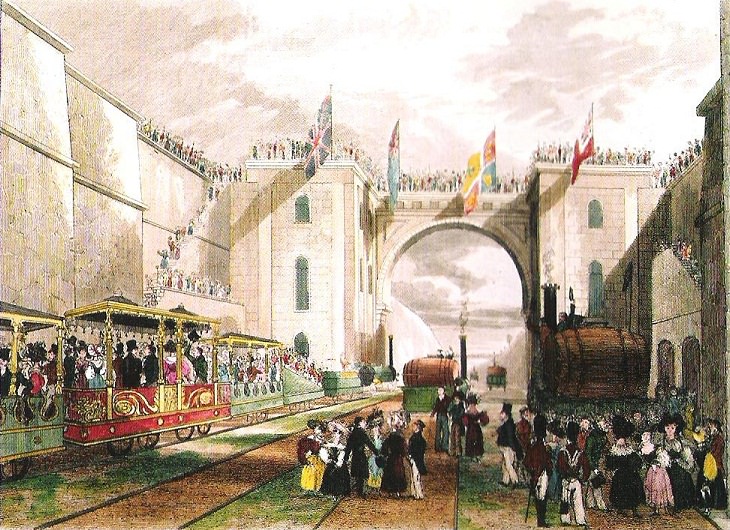
Source: Wikimedia Commons
September 15, 1830, was a momentous day in the history of rail transportation as it marked the launch, amidst teeming crowds, of the Liverpool and Manchester Railway after seven years of development. This inter-urban railway was designed to transport both passengers and goods. It was the first railroad to carry passengers regularly and kick-started the age of steam-powered rail travel. Most railways before this were horse-drawn. The Liverpool and Manchester Railway was the first one to depend solely on locomotives driven by steam power. It was also the first to be totally double track across its length, the first to carry mail and the first to have a signaling system.
The 31-mile (49.8 km) railroad connected Liverpool and Manchester and had an average speed of 30 miles per hour (48.2 k/ph). Within a year of its launch, the trains carried 500,000 passengers and paved the way for a cheaper and more comfortable way of transport than travel by road.
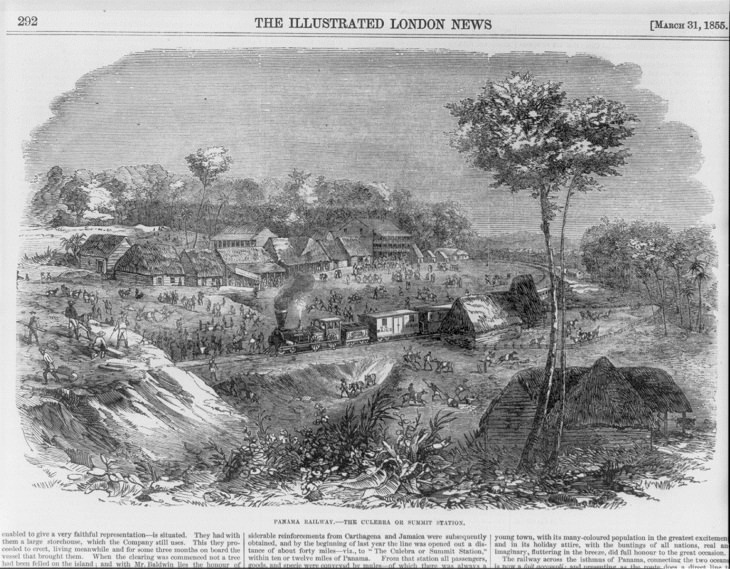
Source: Wikimedia Commons
The Panama Railroad played a crucial part in the construction of the Panama Canal during both the French and American eras. It linked the Atlantic and Pacific Oceans for the first time and managed to transport workers, equipment, and goods to work sites. Completed in 1855, the 50-mile (80.4 km) line was the first transcontinental railroad in the world. The first train on the route ran from the Atlantic Ocean through the Isthmus of Panama to the Pacific Ocean. The railway became instantly popular as it was used by thousands of prospectors who sought riches from the California Gold Rush. The train also significantly shortened the journey of those who had to travel by sea from the East Coast to the West Coast of the United States.
In the 1860s, the Panama Railroad was even used to move troops, materials, and gold from one part of the U.S. coast to the other during the Civil War. It also carried cargo for steamship companies along with US mail for several decades. In 1904, the railroad was purchased by the United States from the French. They then went on to rebuild the railway on higher ground and with a heavier gauge line. It was one of the most frequently used freight rail lines till 1914 when the Panama Canal was finally opened to traffic.
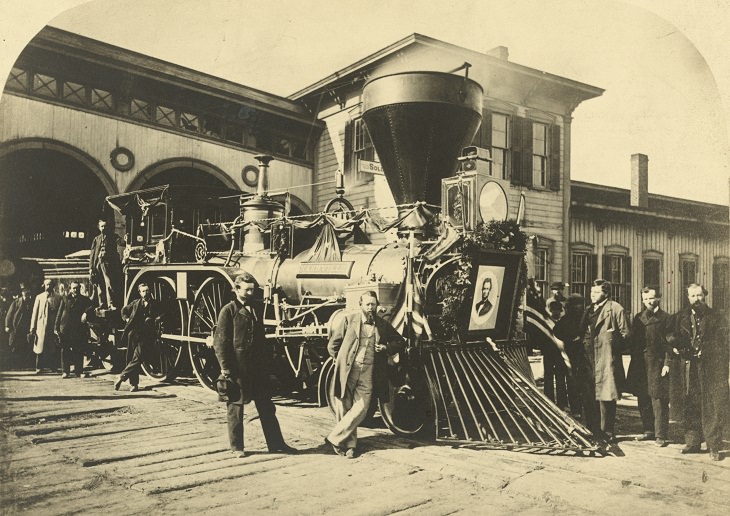
Source: Wikimedia Commons
This train was built as a luxury steam locomotive for President Abraham Lincoln but its first official use came on April 21, 1865, when it carried the coffin of the assassinated president from Washington, D.C. on its way to Springfield, Illinois. The train, carrying the coffin, traveled through 180 cities and seven states before finally reaching its destination. The scheduled stops were published beforehand in newspapers and the train took a 13-day journey through the country as thousands of people came out to pay their last respects to the great leader. Unfortunately, Lincoln couldn’t even set eyes on the train that was built for him but it did become instantly famous, albeit for other reasons.
As a mark of respect, Lincoln’s portrait was fixed to the front of the engine above the cattle guard and the train was dubbed “The Lincoln Special”. On the historic 1,654-mile (2,662 km) journey, about 300 people were aboard the train, including Robert Todd Lincoln, the eldest son of Abraham Lincoln. The train also had the coffin of Lincoln’s son Willie, who had died at the age of 11 in 1862. He was eventually buried alongside his father at their family plot in Springfield.
In 1911, the train was unfortunately destroyed in a fire near Minneapolis, Minnesota.
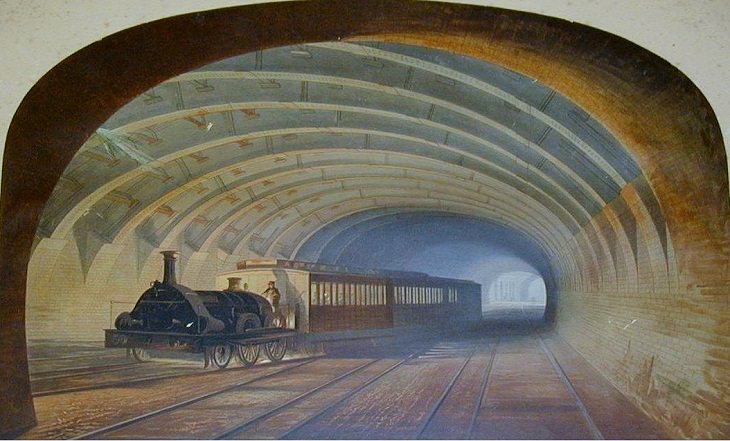
Source: Wikimedia Commons
The inauguration of the Metropolitan Underground Railway on January 10, 1863, was a landmark moment in history. It was the first underground railway in the world and enabled passengers from the railway terminals at Paddington, Euston, and King’s Cross to reach the North West corner of the city at Farringdon Street in the United Kingdom. This new line hence shaped a west-east artery and helped Londoners and visitors to the capital to cross from the west and enter the city.
The Metropolitan Underground Railway became the world’s first subway and carried 38,000 passengers on its opening day itself. It operated on a 3.75-mile (6 km) line and had gas-lit wooden carriages that were pulled by steam locomotives. In the next twelve months after its launch, the railway carried 9.5 million passengers which were staggering numbers in those days. The underground railway proved to be a massive success and it greatly eased traffic congestion on the streets of Britain.
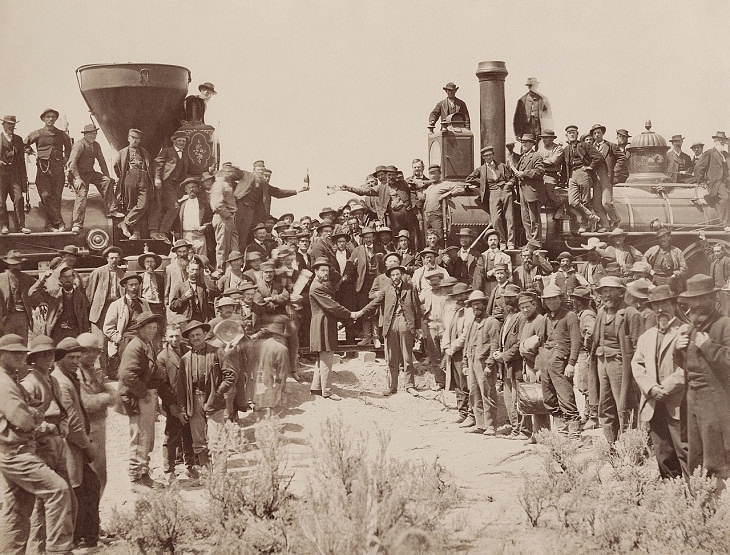
Source: Wikimedia Commons
America’s first transcontinental railway line was a significant moment in the country’s history as linked it from east to west. Before the advent of the Transcontinental Railroad, it cost people almost $1,000 and nearly six treacherous months to journey across the country. This railway line helped in bringing that cost down to only $150 and also reduced the traveling time substantially.
Soon after the advent of the locomotive, talks of building a railway network uniting the continent began taking shape. After seven years of construction, the transcontinental railroad was officially launched on May 10, 1869. The Central Pacific Railroad was built east from Sacramento, California, and the Union Pacific Railroad was constructed from Omaha, Nebraska. The 3,000-mile (4,828 km) cross-country journey took less than two weeks to complete its trip. The success of the railway line was met with widespread celebration across the country.
The Transcontinental Railroad led to the swift westward expansion of the United States as well. The railway line also helped in extracting the rich resources of the West and comfortably transporting them to the markets in the East. This enabled business and commerce to grow and eventually ended the traditional Native American way of life.
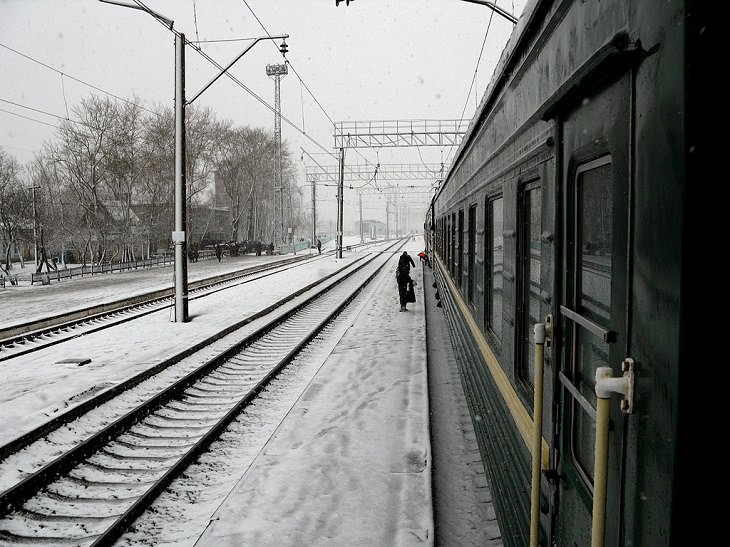
Source: Wikimedia Commons
The Trans-Siberian Railway is widely regarded as one of the most remarkable engineering feats in modern history and for good reason. Completed in 1916, it was the world’s longest single railway journey, spanning 5,772 miles (9289 km) from Moscow to Vladivostok by way of Nizhny Novgorod, Yekaterinburg, Omsk, Novosibirsk, and Irkutsk. It shortened the travel time from Moscow to Vladivostok from months to just eight days.
Construction on the railway line commenced in 1891 and was officially announced by Tsar Alexander III. The route was daunting and cut across thick forests, countless rivers, and rocky mountains. However, the project was so expensive that it led to severe economic shortages and insufficient weaponry for the Russian military during World War I. This eventually contributed to the Russian Revolution in 1917. Also, during the Civil War after the Russian Revolution, the Communists used the railroad to strengthen their power and even utilized the line to quickly move soldiers to the front line during World War II.
The Trans-Siberian Railway also caused eastward migration in the country and allowed the transportation of coal, lumber and other raw materials from Siberia to the heart of Russia.
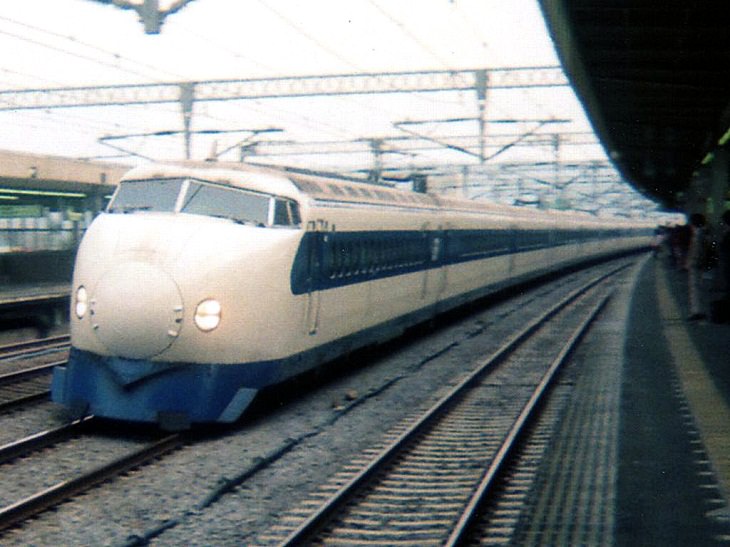
Source: Wikimedia Commons
On October 1, 1964, the world saw its first high-speed commercial train line between Japan’s two largest cities of Tokyo and Osaka. Built along the historic road of Tokaido, the railway line cut short the travel time between the two cities in half. Named Tokaido Shinkansen, the trains on this line ran at an incredible speed of 125 miles per hour (201 km/h) and carried a whopping 100 million passengers in the first three years. The purpose of this groundbreaking bullet train was two-fold: to bring people to the capital city and also to illustrate that high-speed rail can be commercially viable. In the subsequent years, the railway line was extended westward to Okayama, Hiroshima, and Fukuoka.
The engineering of the Tokaido Shinkansen was quite unique: there were no level crossings and no sharp curves; there only dedicated tracks. The massive success of these bullet trains showed the world how Japan had rebuilt post the war as an industrial powerhouse. Such was its impact that future high-speed rail projects all over the world took inspiration from this railway line and continue to do so even today.